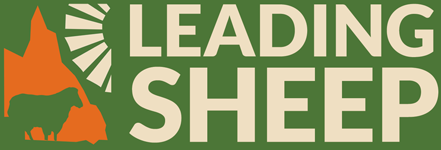Tagging requirements
 Queensland is moving to mandatory eID for individual sheep and goats, as part of a national initiative. By 2027, all sheep and managed goats will need to be tagged with an eID if moved from the property of residence. Visual tag system and mob-based movements will no longer be allowed. More information on the changes and key dates can be found at the Department of Agriculture and Fisheries | Queensland sheep and goat eID (engagementhub.com.au) or in this webinar recorded on 3 October 2023.
Queensland is moving to mandatory eID for individual sheep and goats, as part of a national initiative. By 2027, all sheep and managed goats will need to be tagged with an eID if moved from the property of residence. Visual tag system and mob-based movements will no longer be allowed. More information on the changes and key dates can be found at the Department of Agriculture and Fisheries | Queensland sheep and goat eID (engagementhub.com.au) or in this webinar recorded on 3 October 2023.
These incoming changes are strongly motivated by improving traceability and therefore our response to emergency diseases like foot and mouth disease. The Where’s Woolly video shows how eID improves traceability compared to visual tags and mob-based transfers.
NLIS tags
eID tags will need to be NLIS-accredited devices. The list below shows NLIS accredited devices as at July 2023. For the most up to date information, please check Animal Identification | Integrity Systems. To achieve accreditation, devices must pass retention testing. If tag retention issues are experienced, producers are strongly encouraged to report. Complaint forms are available at the link above.
| Full NLIS accreditation status | |
| Allflex Lightweight | |
| Allflex Rapid | |
| Leader Leadertronic |  |
| Leader Multitronic | |
| Shearwell ASET |  |
| Zee Tags Datamars Goat legband
Only trialled in Australia on Saanen and Anglo-Nubian goats. No information is available regarding the suitability of this device for use on kids and small goat breeds, so user discretion is advised. This device has been trialled on Dairy Goats only |
|
| Leader Multipin (Red Cap) | |
| Enduro Tags Combo 2 |  |
| Conditional NLIS accreditation status | |
| Zee Tags Tagfaster RFID and Visual |  |
| Zee Tags FET RFID and Visual |  |
| Datamars TagFaster (with TI transponder) |
Using eID data for flock productivity
eID can also provide productivity benefits. eID can be a powerful fine-tuning tool to record data such as reproductive performance and wool traits. This data can then be used to improve selection of the most productive sheep. Leading Sheep has a range of resources sharing producer experiences with utilising eID to improve productivity their enterprises.
Electronic identification ideas – how EIDs might be beneficial in your flock FlockTalk article provides a quick snapshot of practical ways producers are already using data from eIDs in Queensland.
 St George grazier Rod Avery shares his experience with introducing eID tags in 2018 in this FlockTalk article ‘Tags help identify top performers’. The article also shares consultant Anthony Shepherd’s insights into making the most out of eID, including the repeatability of a ewe’s inability to rear a lamb.
St George grazier Rod Avery shares his experience with introducing eID tags in 2018 in this FlockTalk article ‘Tags help identify top performers’. The article also shares consultant Anthony Shepherd’s insights into making the most out of eID, including the repeatability of a ewe’s inability to rear a lamb.
Rod identified variation in wool from 14 to 28 microns and fleece weights of 2.8 to 8 kilograms. Rod also collected information on rearing lambs and their condition at lamb marking. More information can be found in this case study.
Rod gave an update in 2022. Find out what he’s learnt along the way in this video and case study. He has some valuable insights on how to tackle the new technology to avoid frustration. He also describes how he can now easily take out the bottom performers if he needed to downsize his flock.
 Bim Goodridge from Waroo, Inglewood also shares his 15+ years of experience with eID tags in this case study. Bim improved his wool from 5kg of broader wool to 4.5kg of quality 17-18 micron wool using data from eID tags. Bim discusses challenges he faced at the start, his system set up and his experience with tag retention.
Bim Goodridge from Waroo, Inglewood also shares his 15+ years of experience with eID tags in this case study. Bim improved his wool from 5kg of broader wool to 4.5kg of quality 17-18 micron wool using data from eID tags. Bim discusses challenges he faced at the start, his system set up and his experience with tag retention.
Graham and Jan Chambers have found different benefits, sharing that their auto-drafter has given them a chance to stay on their property for longer by taking some of the physicality out of yard work. They describe the speed they can draft, what to avoid so as not to slow the process and how they overcame connectivity issues. Read more in their case study.
Following a series of eID workshops in south and south-west Queensland in 2018, producer experiences with eIDs were captured. The resulting shares producer experiences and FAQs when considering utilising eID. Keep in mind this document was compiled in 2018 so pricing and NLIS tagging requirements will be outdated.
This EIDs in sheep Webinar was recorded in 2018. Phil Holmes introduces the webinar, discussing when using eID data will help a sheep enterprise improve productivity. Anthony Uren shares his experience introducing eID into their 42,000 head flock on Congi, on the northern NSW tablelands. Anthony describes in detail what and how they use the data, including a variation in $83/head in fleece value as motivation to use eID, showing the technology he uses and the outcomes they’ve achieved.
